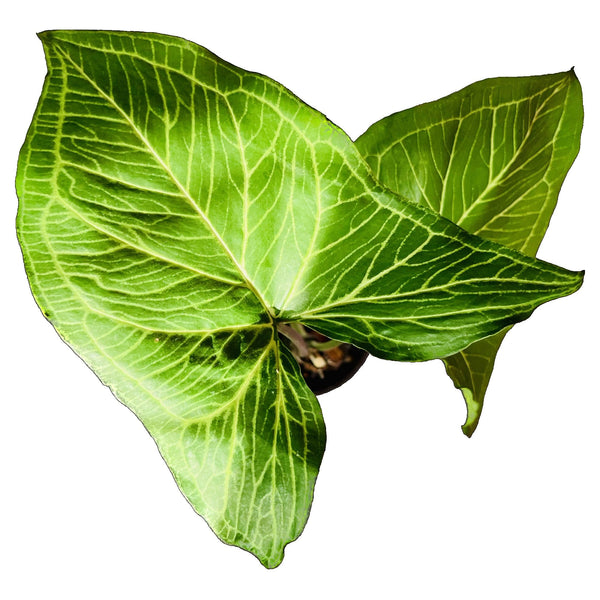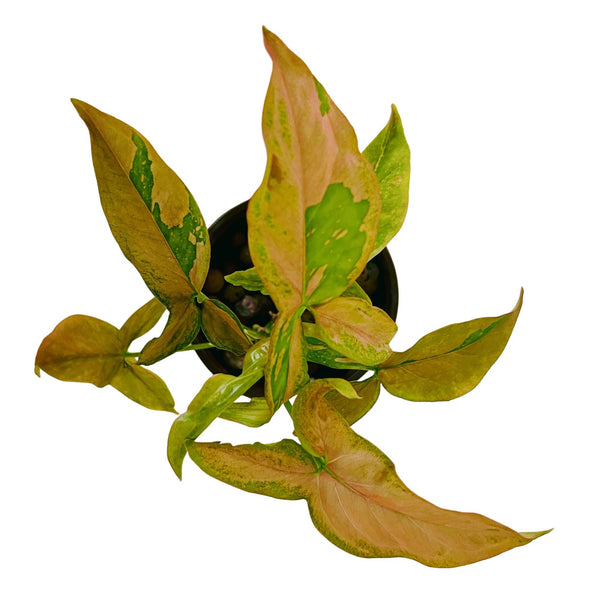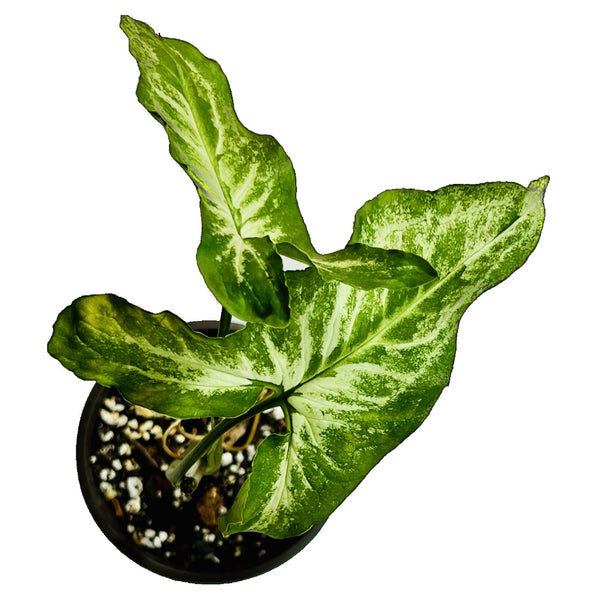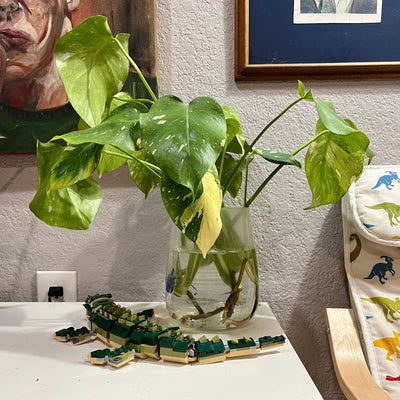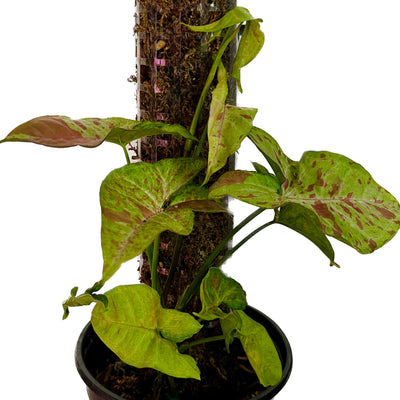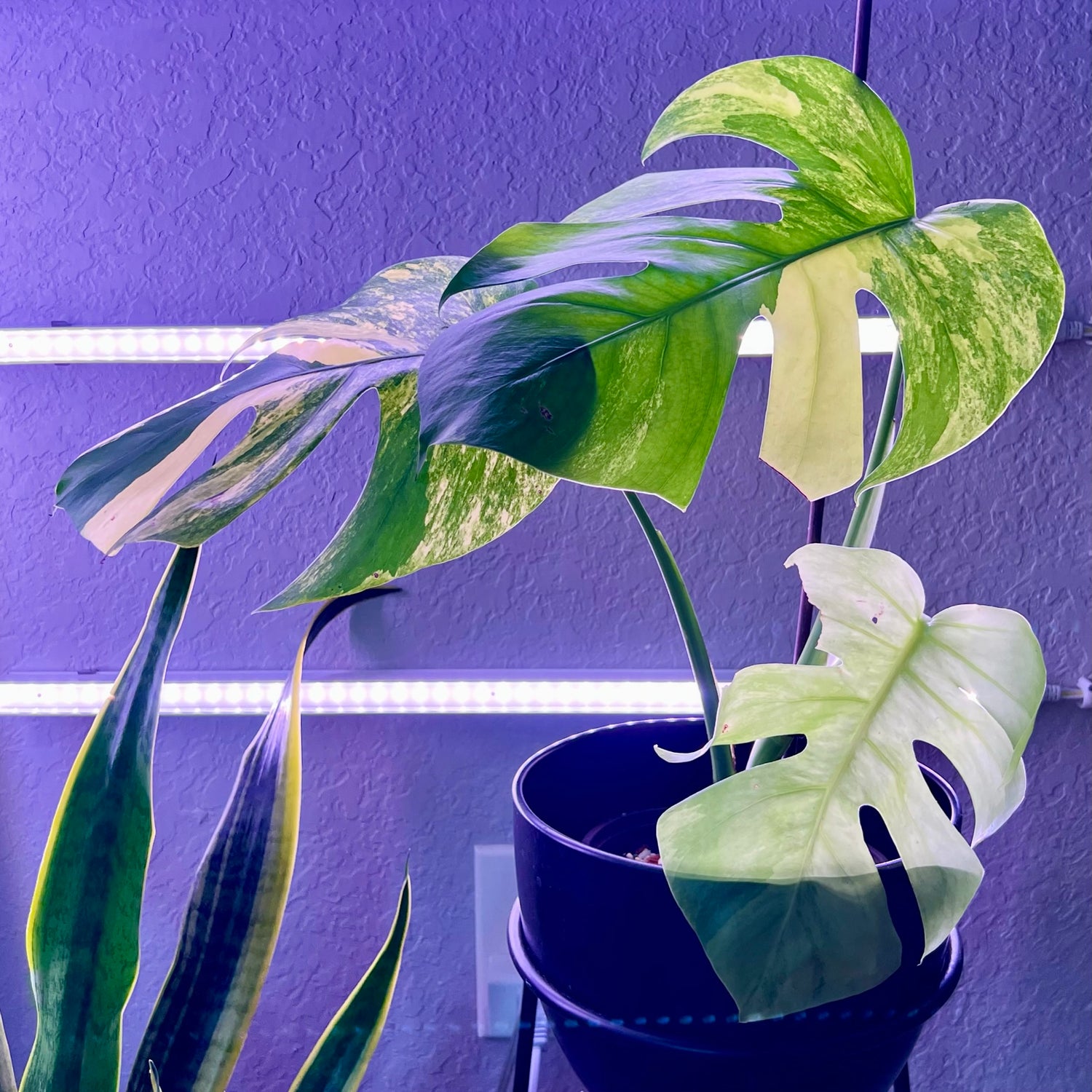Syngoniums are beautiful houseplants that are easy to propagate. Heres an easy and surefire way to clone your Syngonium via propagation:
-
Choose a healthy parent plant
Choose a parent plant that is healthy and free from any pests or diseases. -
Select a stem
Look for a healthy stem that has two or three leaves - you can use as little as a single node and leaf but clones succeed more often and grow faster if started with a few leaves. Propagation is more effective when the stem has developed air roots. -
Cut the stem
Use a clean, sharp pair of scissors or pruning shears to cut the stem just between two nodes. A node is where the leaf joins the stem. -
Remove the lower leaves
Remove the leaves from the lower part of the stem, leaving only two or three leaves at the top. -
Dry the stem
Allow the stem to dry and callous for up to 24 hours. -
Dip in rooting hormone (optional)
Dip the cut end of the stem in rooting hormone. This will help to promote root growth. -
Plant the stem in sphagnum moss
Sandwich the stem in damp sphagnum moss, the top should be covered by a shallow layer (about 1/2 and inch) with the bulk underneath. Plant the stem and moss bundle inside an small plastic nursery pot. -
Place in a prop box
Place inside a clear plastic container with a top (or prop box) which is tall enough to house the leaves . A setup like this will maximize the humidity and help the plant to grow back its roots faster. -
Care for the prop box
Keep the newly prop box in a location that receives bright, indirect light. Open for about an hour a day in order to allow airflow. Give the moss a small amount of water as needed to maintain a slight dampness. -
Wait for roots to grow
In a few weeks, roots will start to grow from the stem. You can gently tug on the stem to check if it has developed roots. If the stem feels firm, it has developed roots. -
Transplant
Once the roots are well developed, you can transplant the new Syngonium plant into a pot with aroid potting mix.
Congratulations! You have successfully propagated your Syngonium plant.



